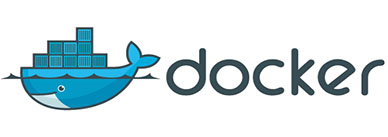
In this tutorial, we will show you how to install Docker Compose on your CentOS 7 server. For those of you who didn’t know, Docker Compose is a command-line tool to define and configure multi-container docker applications. In other words, we can say docker-compose is used to link multiple containers and deploy an application from a single command.
This article assumes you have at least basic knowledge of Linux, know how to use the shell, and most importantly, you host your site on your own VPS. The installation is quite simple and assumes you are running in the root account, if not you may need to add ‘sudo‘ to the commands to get root privileges. I will show you the step-by-step installation of Docker Compose on a CentOS 7 server.
Prerequisites
- A server running one of the following operating systems: CentOS 7.
- It’s recommended that you use a fresh OS install to prevent any potential issues.
- SSH access to the server (or just open Terminal if you’re on a desktop).
- A
non-root sudo useror access to theroot user. We recommend acting as anon-root sudo user, however, as you can harm your system if you’re not careful when acting as the root.
Install Docker Compose on CentOS 7
Step 1. First, let’s start by ensuring your system is up-to-date.
yum clean all yum -y update
Step 2. Installing Docker using YUM.
Docker is included by default in the CentOS-Extras repository. To install run the following command:
yum -y install docker yum -y install device-mapper device-mapper-event device-mapper-libs device-mapper-event-libs
Start and enable Docker service:
systemctl start docker.service systemctl enable docker.service
And verify your work by checking the status of Docker:
systemctl status docker.service
Step 3. Installing Docker Compose.
Once Docker has been installed, install Docker Compose. First of all, install the EPEL repository by executing the command:
yum install epel-release yum install -y python-pip
Then you can install Docker Compose:
pip install docker-compose
You will also need to upgrade your Python packages on CentOS 7 to get docker-compose to run successfully:
yum upgrade python*
Check the Docker Compose version with the following command:
docker-compose -v
Step 4. Testing Docker Compose.
Now that we have Docker Compose installed, let’s test it with this really simple example, Create a new directory and move into it:
mkdir hello-world cd hello-world
Create a new YAML file:
nano docker-compose.yml
In this file paste the following content:
idroot-compose-test: image: hello-world
Next, execute the following command in the hello-world directory:
sudo docker-compose up
The output should start with the following:
Output of docker-compose up Creating helloworld_idroot-compose-test_1... Attaching to helloworld_idroot-compose-test_1 idroot-compose-test_1 | idroot-compose-test_1 | Hello from Docker. idroot-compose-test_1 | This message shows that your installation appears to be working correctly. idroot-compose-test_1 |
Docker containers only run as long as the command is active, so the container will stop when the test finishes running.
Congratulations! You have successfully installed Docker Compose. Thanks for using this tutorial for installing Docker Compose on your CentOS 7 system. For additional help or useful information, we recommend you check the official Docker website.